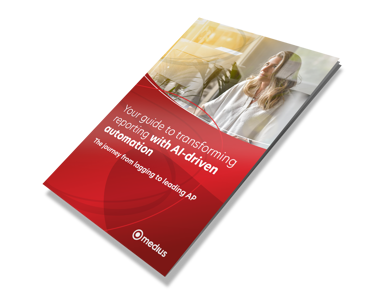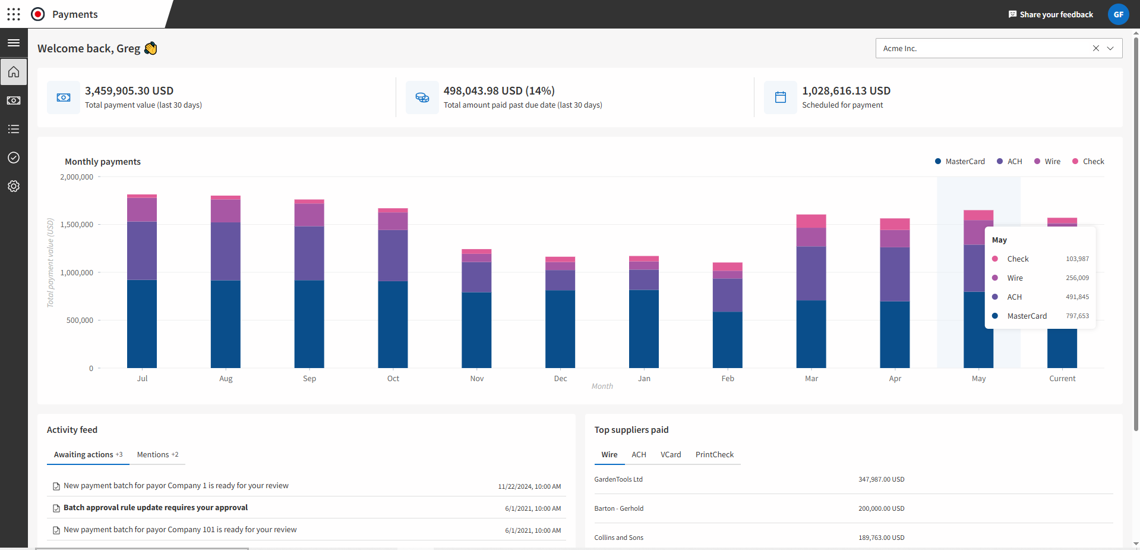

Cash flow forecasting is the process of estimating a company’s future financial position by predicting the timing and amounts of incoming and outgoing cash. It helps finance teams understand whether the business will have enough liquidity to meet its obligations and invest in growth opportunities.
Effective forecasting provides a forward-looking view of financial health. It supports better decision-making, safeguards against shortfalls, and enables proactive planning across departments. A strong forecasting model relies on accurate, real-time data from core functions like accounts payable (AP) to ensure outgoing payments are reflected clearly.
Why cash flow forecasting matters
Cash flow is the lifeblood of any organization. Without an accurate forecast, businesses risk overcommitting capital, missing payment deadlines, or failing to seize strategic opportunities. A reliable forecast gives CFOs, controllers, and treasury leaders the insights needed to manage liquidity, plan budgets, and navigate uncertainty.
Timely and accurate forecasting is especially critical in environments with fluctuating revenues or large supplier networks. For many organizations, accounts payable is one of the largest sources of outgoing cash, which is why AP automation plays a central role in improving forecast precision. When AP data is updated in real time, finance teams can trust the numbers guiding their decisions.

Key components of a cash flow forecast
A complete cash flow forecast considers both inflows and outflows over a defined period. Common elements include:
Inflows
Customer payments, financing, investment returns
Outflows
Supplier payments, payroll, rent, taxes, capital expenditures
Forecasting requires careful categorization and alignment with expected timing. In larger organizations, ERP integration ensures that data from accounts receivable, AP, and other financial functions is centralized and current. This improves accuracy and eliminates the delays caused by disconnected systems or manual inputs.
Painful forecasting ends with AI
Are you tired of spending countless hours on manual reporting? Stop the endless spreadsheet struggle and get the accurate, timely insights you need to drive your business forward.
This guide is your blueprint for change. Discover how to leverage artificial intelligence to automate your reporting, streamline workflows, and unlock smarter, faster decision-making.

The role of accounts payable in forecasting
Accounts payable is a major driver of outflows, and its accuracy significantly affects cash flow forecasting. Knowing when invoices are due, which ones have been approved, and what terms have been negotiated gives finance teams a realistic view of upcoming obligations.
The AP team contributes by maintaining clean data, resolving discrepancies, and tracking payment schedules. Late or unrecorded invoices can lead to forecast gaps and last-minute cash constraints. That’s why collaboration between AP and FP&A teams is essential for dependable forecasting.
How AP automation improves forecasting accuracy
Manual AP processes make it difficult to maintain consistent, up-to-date data. With AP automation, businesses can streamline invoice intake, approval workflows, and payment scheduling. This leads to more accurate and timely reporting on upcoming outflows.
Automation provides:
A clear picture of pending liabilities
Instant access to invoice status and payment terms
Reduced human error in invoice entry and approval
Standardized reporting formats for forecasting teams
These capabilities help finance leaders move beyond reactive cash management toward a more predictive, strategic approach.
Using Medius to enhance forecasting
Accurate forecasting depends on control over both data and payment timing. With Medius Payments, finance teams can schedule disbursements based on cash flow needs, rather than fixed dates or batch processing constraints. This flexibility supports more dynamic forecasting and better alignment between planning and execution.
Medius also provides real-time visibility into AP activities, helping teams adjust forecasts as new information becomes available. Integration with core financial systems ensures that decision-makers work from a single source of truth.
FAQs: Cash flow forecasting
Direct forecasting tracks actual cash transactions over short timeframes, while indirect forecasting projects cash flow based on income statements and balance sheets for longer-term planning.
This depends on your business model and cash cycle. Many companies forecast weekly for short-term needs and monthly or quarterly for strategic planning.
Common causes include missing invoice data, outdated AP records, revenue uncertainty, and manual errors. Automation and system integration reduce these risks.
Automation ensures that cash outflow data is accurate, up to date, and instantly available for forecasting models, reducing reliance on guesswork or outdated spreadsheets.


